Table of contents
Raw lentils ( lens culinaris , erve, kitchen lentil) are soaked or cooked shortly before consumption due to their ingredients. Unpeeled lentils change their nutritional composition when soaked in water. They then have a reduced phytic acid content and can then be eaten raw.
Use in the kitchen:
Lentils are pulses, very good sources of protein and easier on our digestion than beans or peas. They can only be eaten raw after soaking or in sprouted form. They should be washed before cooking - or you can soak them overnight in water for a shorter cooking time and then cook them in fresh water. 1 If you puree the lentils, as in certain lentil soups, they are even easier to digest. They also taste excellent cooked as a side dish or mixed with vinegar and oil as a salad. Dal or curry, Indian dishes that are now well known everywhere, taste excellent with lentils as the base ingredient and can be refined with various oriental spices.
Gluten-free baked goods and bread made with lentil flour are increasingly found on the shelves. To increase the protein content, the flour is also mixed into normal grain flour.
Lentils have always been considered food for the poor because they are inexpensive, have a very long shelf life when dried and are easy to store. They are also filling due to their high fiber content and are extremely healthy thanks to their diverse ingredients. In South and West Asia and in the Mediterranean, they are usually eaten in combination with rice because the cooking time is similar.
The smaller the lentils, the more intense their flavor is, as they have a higher proportion of shell, which is where the important flavorings are stored. The shape of the lentils is uniformly flat and round (plate shape). You can buy red, green, yellow, brown, purple (violet) or black lentils. There are no strict rules about how they are named, which is why there is often confusion (see the "Shopping" chapter below).
The "red lentils" sold in stores are peeled brown or purple lentils with an orange-red core. Because they have no shell, you don't have to soak them before cooking and they cook faster than other pulses. Peeled lentils have lost flavors and nutrients through peeling, but also fiber in the form of trisaccharides that only bacteria can break down, causing flatulence in the large intestine.
When cooked, peeled red lentils take on a yellowish color. Because they fall apart easily, they are ideal for puree, stews and soups. Unpeeled lentils, on the other hand, remain firmer and (especially the green ones) are better as a side dish or salad.
Homemade preparation - Germinate lentils:
Germination of lentils: Germinated lentils are also suitable for further processing raw, provided that you do not eat them predominantly, as they contain small amounts of hydrogen cyanide. Only whole, unpeeled lentils germinate. All commercially available types of lentils are suitable for this, provided they do not contain any sprout inhibitors. As with cooked lentils, the smaller ones taste more intense than the larger ones. Germination jars, bowls or sprouting towers can be used as germination devices. Depending on the type of lentil, one cup of lentils yields around 4-6 cups of lentil sprouts.
Depending on the type and size, lentils should be soaked in lukewarm water for up to 12 hours. Then rinse and transfer to a sprouter. The optimal germination temperature is around 18-20 °C and the germination process takes around 1-2 days. Sprouts will develop after 3-4 days. The lentils should always remain moist during the germination process, which is why they should be rinsed 2-3 times with clean water. Please ensure that they are not completely covered by water. They taste best before the cotyledons develop, when you can particularly appreciate the nutty taste. Lentil sprouts are used in soups, stews, risotto, spreads or to garnish salads.
Advantages : The germination process releases nutrients better: Additional vitamin C is produced during germination and certain vitamin contents multiply. The bloating substances are reduced, as are phytic acid and tannins. Disadvantages : When germinating seeds or pulses, it is extremely important to work carefully and cleanly, as mold can develop, which is harmful to health when consumed.
For further details, see the ingredient Lentils, sprouted, raw. If you want to consume the lentils directly after soaking (without sprouting), find out more here.
Vegan recipe for lukewarm lentil salad:
You can conjure up this vegan dish for 2 people using 150 g of green lentils, 2 tbsp of white balsamic vinegar, a little olive or rapeseed oil, 100 g of thinly sliced celery, 1 bunch of radishes in wedges, 1 apple in slices and 1 bunch of onions (with green parts) in rings. First, steam the lentils for around 3 minutes, then pour in the water and cook over a low heat for around 30 minutes until soft (ideally without salt, see cooked lentils). After draining, stir the vinegar and oil in a large bowl and season with salt and pepper. Add the lentils, celery and the rest of the ingredients and mix well. Enjoy your meal!
Rapeseed oil is healthier than olive oil. For a healthy diet, it is recommended to use oil sparingly or even to avoid it altogether.
| Not only vegans or vegetarians should read this: Vegans often eat unhealthily. Avoidable nutritional errors. |
Shopping - where to buy?
Prefer lentils that are organically grown and of regional origin. You can buy these in organic shops, but also in some well-stocked supermarkets such as Denns, Alnatura, Coop, Migros, Spar, Rewe, Edeka or Hofer, less frequently in major retailers such as Denner, Volg, Aldi and Lidl. Raw lentil seeds are sold as "dried lentils".
Lentils are not only differentiated by whether they are peeled or unpeeled or by color, but also by size: the smallest, known as sugar lentils, measure 4-5 mm. Medium-sized lentils have a diameter of 5-6 mm and plate lentils are between 6 and 7 mm in size. Even larger specimens are called giant lentils. Red lentils are usually smaller than green lentils.
If you go by color, a distinction based on the color of the kernel is widespread, especially in the agricultural sector. This is where green lentils (with yellow or green kernels) are separated from red lentils (with red, orange or yellow kernels). Green lentils have a green seed coat, while red lentils have a darker one (depending on the country of origin). 7,8 For this reason, the trade also likes to refer to them as "brown" or "black lentils" and only the peeled, red or orange kernels as "red lentils". Additional plant characteristics are sometimes included in genetic analyses to support the classification. However, this is still controversial. 9
The following varieties are often available:
- Lentils (usually unpeeled and brown), also canned
- Red lentils (slightly smaller, peeled or halved), mushy after cooking
- Mountain lentils
- Beluga lentils (very small, black), remain firm after cooking
- Puy lentils (green), from the volcanic soil around Puy-en-Velay in France (Auvergne-Rhône-Alpes), 10 therefore also called French lentils
- Yellow lentils
Beluga lentils or caviar lentils are small, black lentils with a particularly fine taste and firm consistency. Puy lentils are at least originally from France and are described as nutty with a crunchy bite.
Storage:
Lentils have a particularly long shelf life when kept airtight in a dark, dry place. Close open packages if possible to ensure that there is no risk of infestation by storage pests (such as moths). Lentil sprouts will last in the refrigerator for around two days.
Ingredients - nutritional value - calories:
Lentils contain less than 1% fat, but the protein and carbohydrate content is very high. After soybeans, they are the legume with the highest protein content. 3 Since they contain all eight essential amino acids, they are considered very popular and important, especially for vegan diets. Lentils are rich in the effectively essential amino acid lysine (1.7 g/100g) - this can also be found in slightly higher quantities in soybeans (2.7 g), green beans (2.1 g) and loose peas (1.77 g). Fenugreek seeds are also comparable (1.68 g).
Unpeeled, lentils contain a lot of fiber and are therefore very filling. The most important vitamins are folic acid, vitamin B1 ( thiamine) and vitamin B6 ( pyridoxine). The proportion of trace elements such as copper, manganese, iron and zinc is also higher than in other pulses. 1 The germination process increases the content of B vitamins and folic acid and the proteins are partially converted. Other ingredients can be found in the nutrient list below.
Lentils have a high purine content, which the body converts into uric acid and excretes through the kidneys. People with high uric acid levels should take this into account, as otherwise gout symptoms may occur.
Lentils are indigestible in their raw form, as they contain toxic ingredients (e.g. lectins) that can be rendered harmless by cooking. Soaking and the germination process can also reduce the toxicity sufficiently.
Health aspects - effects:
Why are lentils so healthy? Lentils are easier to digest than other pulses. They are a good source of iron (8 mg/100g) and are therefore considered effective against anemia. Due to the high fiber content, they help with constipation and lower cholesterol levels. They cause blood sugar to rise slowly and are therefore also recommended for diabetics. The high folic acid content is particularly beneficial for women who want to have children and pregnant women. 1
The phytic acid it contains is said to have an antioxidant and anti-carcinogenic effect. The reduced risk of colon cancer is due to the chelation with iron. Phytic acid has a positive effect on prostate, breast and pancreatic cancer and is also said to lower blood sugar. 5,6
When applied externally, cooked, cooled lentil puree helps with gout symptoms.
Dangers - Intolerances - Side effects:
Raw lentils, like other pulses, have a high phytic acid content. This is found inside the endosperm. Phytic acid is very important for the germ, but less so for us humans. It binds minerals and trace elements such as calcium, zinc, iron, magnesium and manganese. Phytic acid forms insoluble, i.e. indigestible complexes with food proteins. It also inhibits certain digestive enzymes. You can find more information in the following article: Phytic acid or phytate and soaking or germination.
If you eat raw lentils without sprouting them or without soaking them first, you will get headaches, vomiting, diarrhea, or stomach and intestinal problems. However, the sprouting process (or soaking) breaks down various substances that are harmful in raw lentils. For more information, read the ingredient lentils, sprouted, raw.
Occurrence - Origin:
The lentil as we eat it today probably comes from the wild lentil Lens orientalis from Asia Minor. Lentils have been planted and cultivated since the Neolithic period, making them one of the oldest types of dried vegetables. 2 In the Neolithic period (approx. 7000 BC), lentils were a major crop in the Fertile Crescent (Bulgaria, Greece). Lentils were also a staple food in ancient Egypt and Palestine.
Where do lentils grow? Today they are grown in Spain, Russia, Chile, Argentina, the USA, Canada and the Middle East. In India alone, there are over 50 varieties.
Cultivation - Harvest:
Lentils are legumes that bind nitrogen from the air with the help of nodule bacteria in the soil, which has a very positive effect on the soil. If you have previously grown other legumes in the field, no inoculation with nodule bacteria is necessary. They are also very undemanding and can be grown on marly, sandy, calcareous, loose clay soils, which can also be quite shallow. Lentils are considered to be weak competitors, which is why weed control in a pure culture is crucial for successful lentil cultivation. Depending on the climate and soil, there are also mixed cultures with oats or barley. Here it is important not to shade the lentils. Lentil cultivation in Europe is still a niche product and is more common in organic farming. 3
Lentils are harvested with a combine harvester, but it is difficult to determine the time of harvest because lentils ripen very irregularly (from bottom to top). Therefore, drying the harvested lentils is almost always necessary.
General information:
The lentil ( Lens culinaris), also called lentil, erve or kitchen lentil, is a plant species from the genus Lens, from the subfamily Faboideae and within the family Fabaceae or Leguminosae. 4
Literature - Sources:
Bibliography - 10 Sources
| 1. | Roger J. Heilkräfte der Natur. Ein Praxishandbuch. Zürich: Advent Verlag. 2006. |
| 2. | Delaveau P, Lorrain M, et al. Geheimnisse und Heilkräfte der Pflanzen. Zürich: Das Beste. 1978. |
| 3. | bioaktuell.ch Anbau von Biolinsen. Erfahrungen in der Schweiz. |
| 4. | Wikipedia Linsen. |
| 5. | Verghese M., Rao D., Chawan C., Walker L., Shackelford L., Anticarcinogenic effect of phytic acid (IP6): Apoptosis as a possible mechanism of action. LWT Food Science and Technology 2006;39,1093–1098. |
| 6. | Somasundar P. Riggs D., Jackson B., Cunningham C., Vona-Davis L., McFadden D. Inositol hexaphosphate (IP6): a novel treatment for pancreatic cancer. Journal of Surgical Research. 2005;126,199–203. |
| 7. | Yadav S., McNeil D. et al. Lentil: An Ancient Crop for Modern Times. Berlin: Springer Science & Business Media. 2007: 96-97; 384. |
| 8. | Samaranayaka A., Lentil. In: Nadathur S.R., Wanasundara J. et al. Sustainable Protein Sources, Elsevier. 2016. |
| 9. | Chahota R.K. et al. Conventional Genetic Manipulations. In: Singh M., Lentils: Potential Resources for Enhancing Genetic Gains. Elsevier. 2019. |
| 10. | Wikipedia Französisch Lentille verte du Puy. |


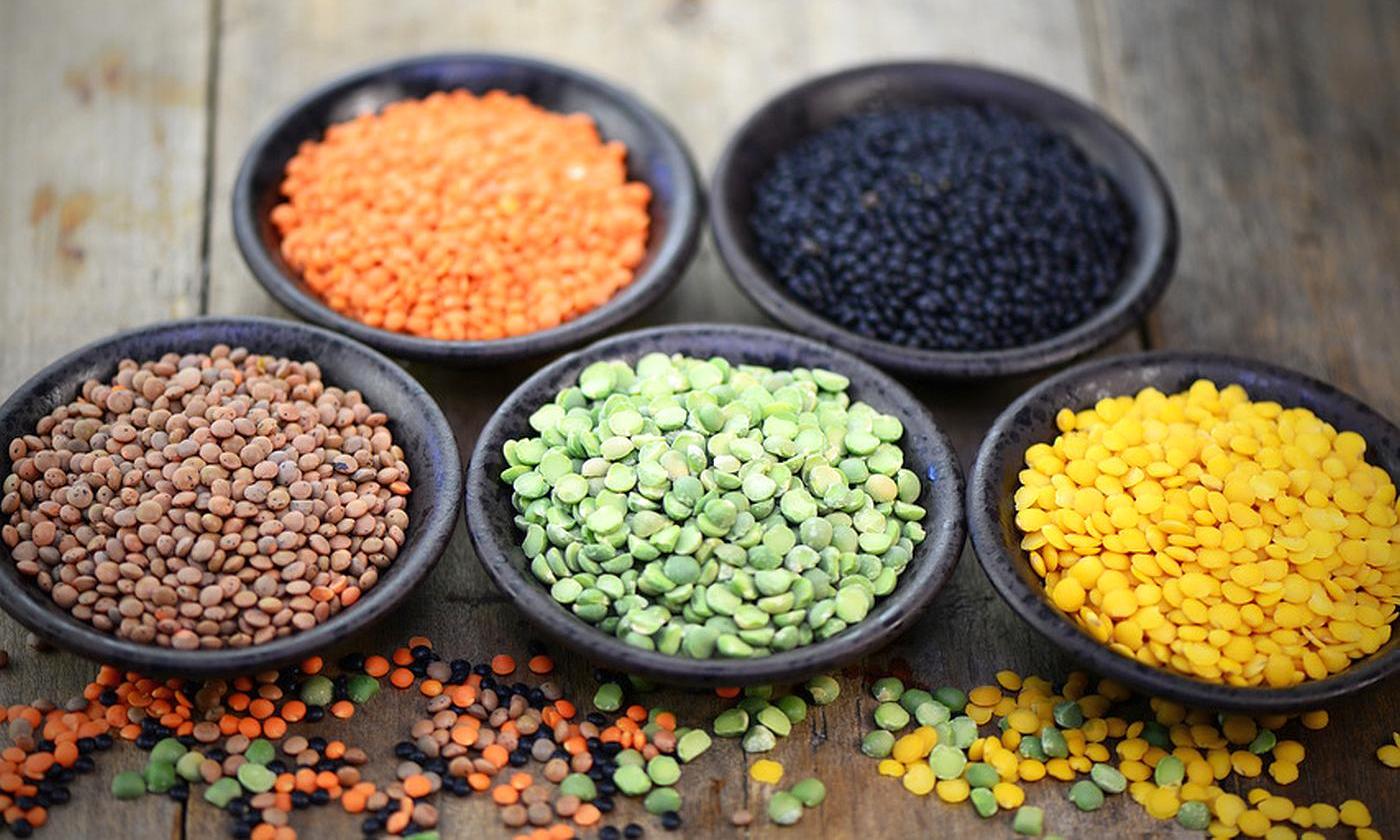
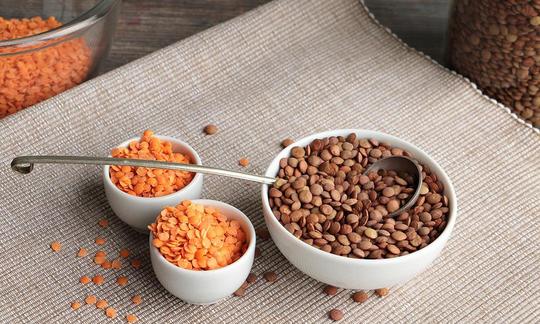

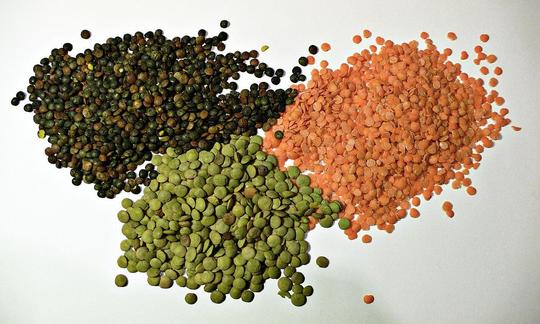

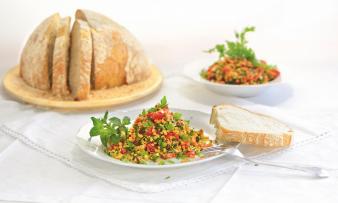
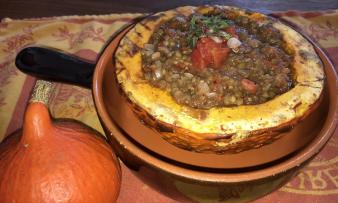
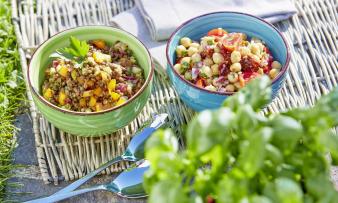





Comments